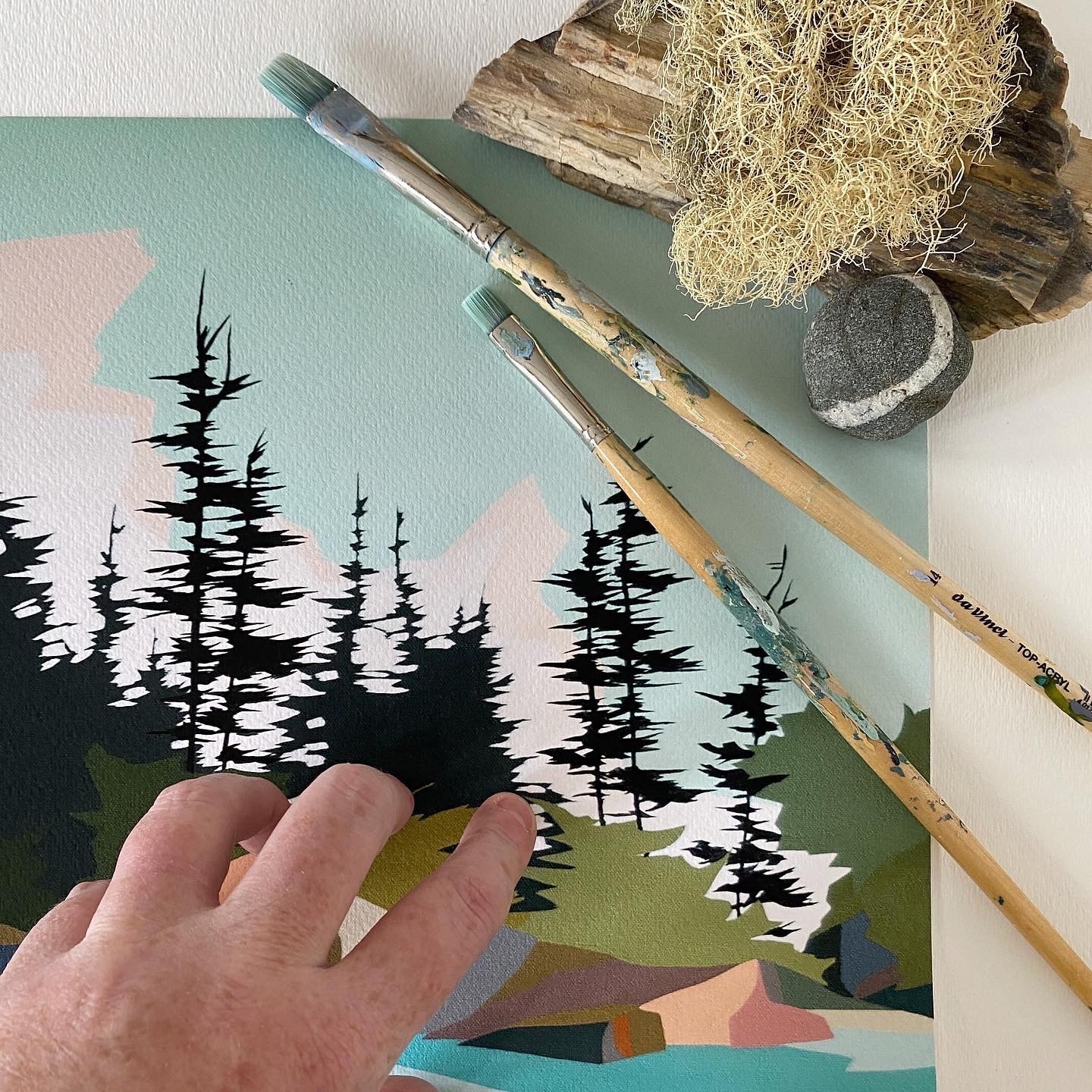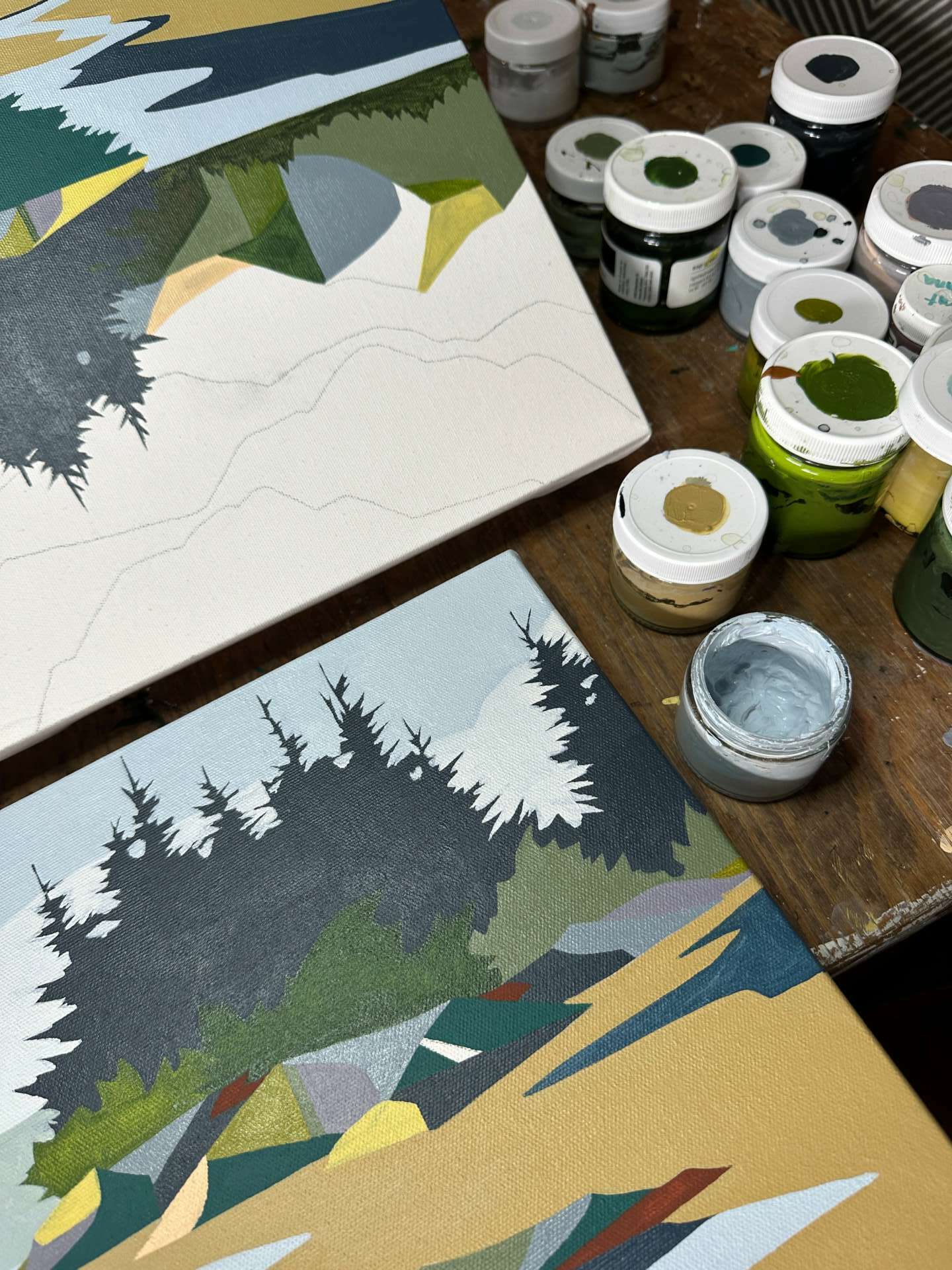We recently connected with Michelle Barkway and have shared our conversation below.
Michelle, looking forward to hearing all of your stories today. Are you able to earn a full-time living from your creative work? If so, can you walk us through your journey and how you made it happen?
Earning a full time wage from my painting and illustration work didn’t happen until four years after I sold my first painting. In those four years I spent time, energy and money honing my artistic style, learning about the business of art and building a community of supportive creatives. As with most things worth doing, there were no shortcuts. It was important for me to try anything and everything before settling on my own best practices and strategies. Throwing creative spaghetti at the wall, I tried it all: wholesale, licensing, art fairs, teaching, custom work. There were plenty of frustrations and disappointments along the way (and still are). Over time I’ve learned to use those experiences to create a “No List,” which broadly includes any income streams or markets that aren’t a good match for my current work or energy. The list helps me to quickly assess whether new opportunities are worth considering and removes some of the emotion from my decisions.
Turning my paintings into a full-time income came when I settled comfortably into my signature style of colour blocked abstract landscapes. For the first time I was selling entire collections of small canvas paintings. But it was when I eventually got brave enough to paint at a larger scale that my business took off. I’m so excited and grateful that demand for my work by collectors and galleries has been growing steadily ever since.


Michelle, before we move on to more of these sorts of questions, can you take some time to bring our readers up to speed on you and what you do?
Once upon a time I was an aquatic biologist. Then a stay at home momma to my two boys. It was my experience as a scientist that ultimately led me to develop my unique way of incorporating the elements of a landscape into my paintings. An understanding of the complexities of these ecosystems allows me to break them into their component parts and build them back into what people see as coastal and mountain scenes. Creating paintings in this style requires an immense amount of patience and attention to the finest of details. Each colour blocked shape is painted with a steady hand and multiple layers of paint. I’m ridiculously stubborn about not using painter’s tape or a straight edge to achieve crisp lines. This helps me feel more connected to the painting and keep the shapes organic.
Every painting is inspired by time spent exploring the beaches and trails of my home on Vancouver Island in British Columbia. The tall trees and cold seas of the Pacific Northwest, and the steep peaks and turquoise lakes of the Canadian Rockies are my happy place. And I think this is how my collectors relate to my paintings, as folks who love to explore and find comfort spending time outdoors.


We often hear about learning lessons – but just as important is unlearning lessons. Have you ever had to unlearn a lesson?
Early in my art career I enrolled in several courses to teach me the business of selling art. A common strategy among the different courses was the “collection launch model,” in which the artist markets their work for release on a set date. Excitement and urgency are built through marketing in the weeks leading up to that date. While this strategy is efficient and exciting, it was mentally exhausting. By the time launch day arrived I was energetically spent, with no interest or enthusiasm for post-launch marketing. There was also a feeling of failure when my collection didn’t sell out as quickly as I’d hoped (or at all).
This year I switched up my marketing strategy, employing a combination of collection launches and drip marketing, in which I shared new paintings as they become available. While the collection launches still take a lot of energy to execute I’ve created systems to streamline the marketing and am learning (very slowly) that every painting will find its person when the timing is right.


Any insights you can share with us about how you built up your social media presence?
Early in my art career I enrolled in several courses to teach me the business of selling art. A common strategy among the different courses was the “collection launch model,” in which the artist markets their work for release on a set date. Excitement and urgency are built through marketing in the weeks leading up to that date. While this strategy is efficient and exciting, it was mentally exhausting. By the time launch day arrived I was energetically spent, with no interest or enthusiasm for post-launch marketing. There was also a feeling of failure when my collection didn’t sell out as quickly as I’d hoped (or at all).
This year I switched up my marketing strategy, employing a combination of collection launches and drip marketing, in which I shared new paintings as they become available. While the collection launches still take a lot of energy to execute I’ve created systems to streamline the marketing and am learning (very slowly) that every painting will find its person when the timing is right.
Contact Info:
- Website: www.michellebarkway.com
- Instagram: www.instagram.com/michellebarkwayart
Image Credits
Kristin Turner McDonald


